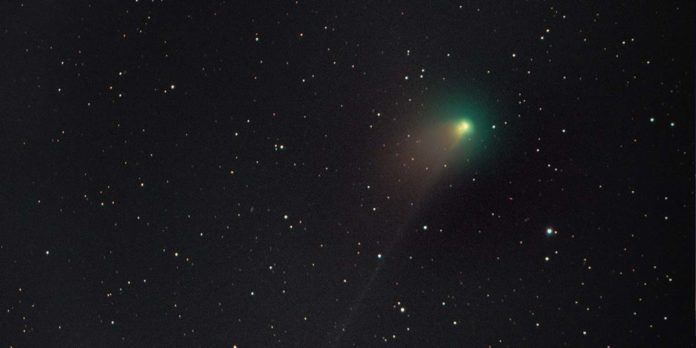
A mean-looking green comet approaching Earth is currently visible on the night sky and will come closest to it on Feb 1st, AP stated.
According to NASA, the last time this comet visited was during Neanderthal times. On Wednesday, it will pass by Earth at a distance of 42 million kilometres (26 million miles) before accelerating off again. This means there is no chance of an event of a comet hitting earth. The comet is unlikely to return for millions of years so it’s the last time to enjoy this green beauty.
Anyone looking for this green comet tonight may already find it in the northern night sky. Astronomers recommend looking for it in darker areas outside of the cities where star fans can find it with the naked eye. Through the end of January, the come will get brighter as it approaches and rises higher over the horizon. The best time to see it is before dawn.
It will fly between Earth and Mars’ orbits on Wednesday at a speed of 207,000km/h (128 500 mph). Its tail is likely to be millions of kilometres long, and its nucleus measures roughly 1.6km across (one mile).
The last time the comet passed through the planetary neighbourhood of the solar system was around 50,000 years ago. Scientists based their estimations on the comet’s orbit, so the number may not be accurate. Paul Chodas from NASA is not sure how close it got to Earth and if the Neanderthals were able to see it.
Such an event of a comet approaching earth is quite rare and only happens once every few years. The last time a similar comet appeared on the night sky was in 2020, when Neowise comet flew by Earth. The orbit was much smaller than the green comet tonight, as it’s likely to return in less than 7000 years.











